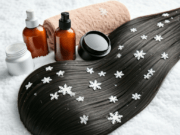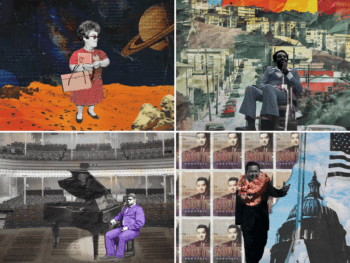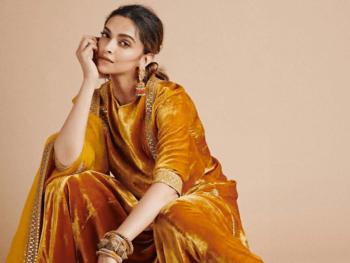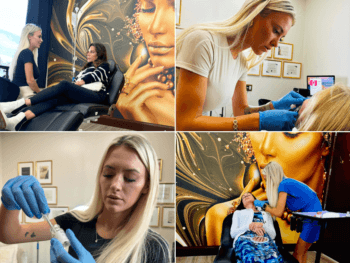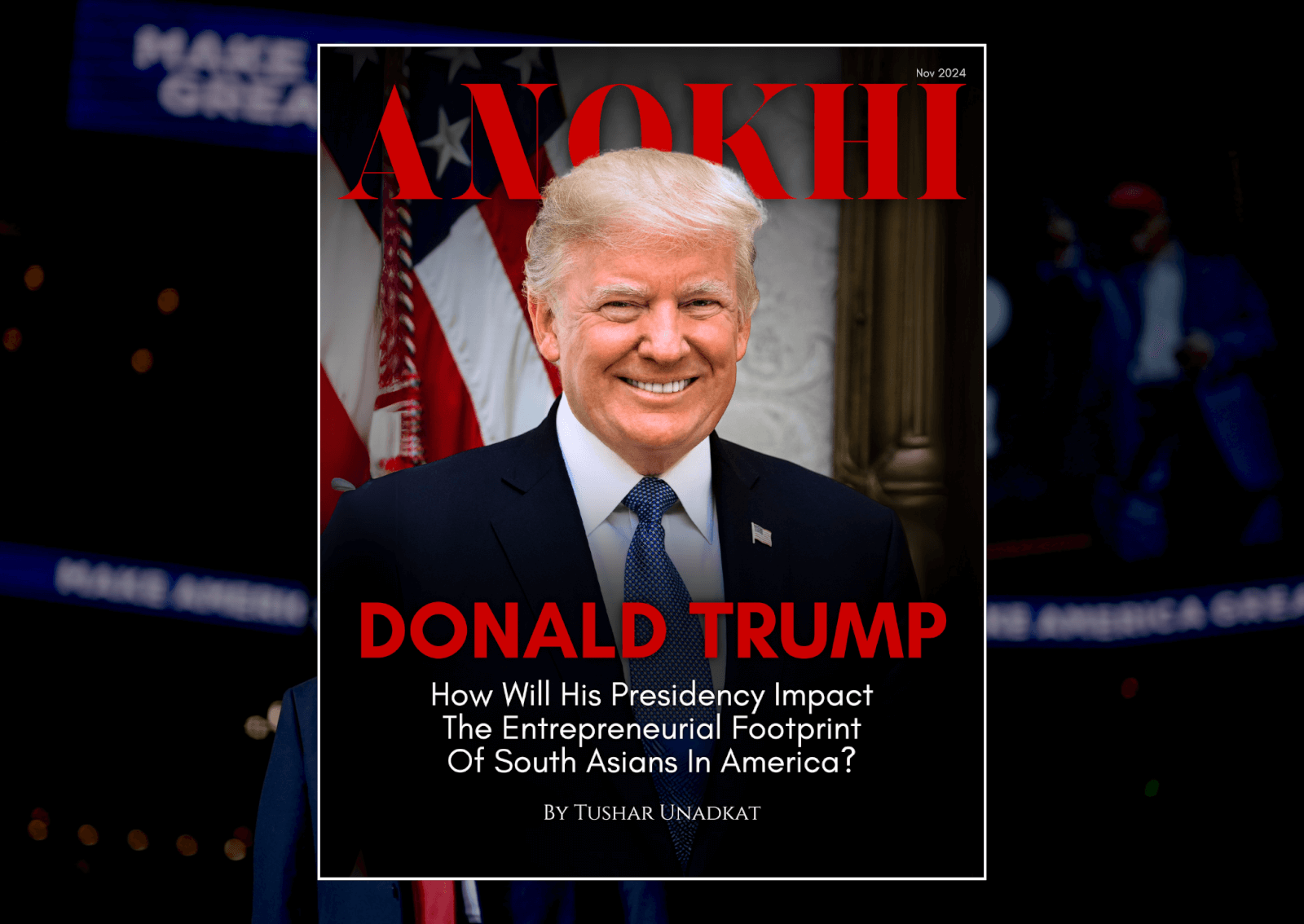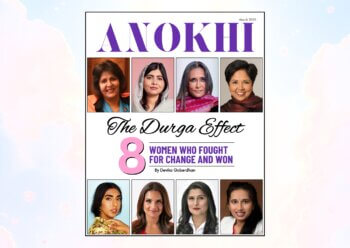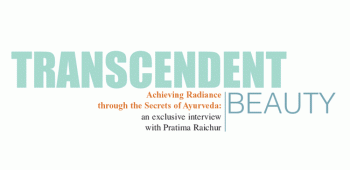
Achieving Radiance through the Secrets of Ayurveda: an exclusive interview with Pratima Raichur
In an interview with ANOKHI, Pratima Raichur, a healer and aesthetician of immeasurable grace, shares her muse and evolutionary philosophy regarding the nature of beauty. Raichur’s evocative, sensual book Absolute Beauty gently guides even the newcomer through her vast knowledge of Ayurveda. In addition to the English version, the book has been translated into several languages including Dutch, French, German and Spanish. For over thirty years, Raichur has offered her gentle touch tohundreds through personal consultations. She is the brainchild of two Ayurvedic skin care lines and owner of Pratima Ayurvedic Skin Care Clinic in Manhattan (soon moving to New York’s Soho district).
You were trained as a chemist and botanist but also as an aesthetician. When specifically did your interest in beauty develop?
I started studying Ayurveda formally as an adolescent around the age of 12 or 13, under the tutelage of a local physician. On the verge of womanhood, I was offered some lessons in Ayurvedic home remedies and skin care regimens – material that was painstakingly transcribed in notebooks I would use over a decade later. Of course, at that young age, I used most of the recipes for myself. As I embarked on my early career as a chemist in England, I was slowly exposed to a world where western science predominated. I recall one particular incident where a hospital colleague had received a facial the day before and been left with unsightly patches and bumps. Within days after prescribing a formula I had created from natural herbs and oils, her complexion had cleared completely. You might say my curiosity in science (both western and Ayurvedic) as well as my childhood fascination with aesthetics and beauty melded into a unique career.
You describe beauty as the representation of fullness of life and self-sufficiency – a certain wholeness that unfolds with our life experiences. That’s an extremely empowering idea of beauty. Does that mean that at some level beauty is connected to our spiritual, emotional, and psychological evolution?
Yes. Beauty is a manifestation of our inner being. Whatever presents itself on the outside is a reflection of what is happening inside us. That manifestation is a reflection that surfaces on our skin, reflects in our physical health and overall well being. Anger, jealousy, bitterness, hostility, depression and grief – all negative emotions have an effect on the intelligence of the body-mind connection.
Each thought that we have secretes a hormone that affects our physical being. Today, modern science has proved this, but this was a revelation Ayurveda uncovered 5,000 years ago. Our body is a reflection of our subconscious mind. What is spirituality? It is nothing else but the reflection of the soul, our level of consciousness and compassion. Those are the true traits that reflect the nature of beauty. I often tell people there are three types of beauty: external or physical beauty, inner beauty and absolute beauty. For most people, it is a progression from one stage to the next. External beauty is what we physically see. It’s the appeal of pure aesthetics. So, while one may be well put together physically, a manifestation of what is happening within may not be evident until much later. Inner beauty is virtues we cultivate: kindness, compassion, generosity. Absolute beauty transcends both the external and internal. It is everlasting beauty, or beauty of the spirit. It is a reflection of energy that is neither created nor destroyed. It is boundless, timeless and ageless. It just is, without judgment or definition.
Is that what you mean by the book’s ending where you leave us with an interesting thought, “Wherein pure knowledge and happiness is, there lies beauty”?
Absolutely. Pure knowledge can not substitute what we see physically. Knowledge, or understanding of who we are, what our purpose is in life and the joy that comes from that realization, are the real spring wells of beauty. In my book, I describe how when we are happy or in a state of bliss, we naturally radiate hormones that generate joy itself.
This means our internal systems work more efficiently to produce optimal health. Our immunity to ward off disease, deal with challenges and accept what comes our way are also important indicators of where we are emotionally. The reproductive and digestive systems work in harmony with the body as opposed to against it.
In the section Soul Purification, you discuss principles such as mediation, courage in action, and yama (ethics) and niyama and their relation to beauty. How do these techniques serve as “detox tools” in achieving beauty and radiance?
Because those are the things that combat illness, promote clarity of mind and heal the inner world. Without emphasis on these areas, achieving true beauty is a fleeting attempt. Not hurting anyone, releasing judgment of the self and of others, not taking anything from anyone are key. In other words, doing the best we can with the skills and resources that are at our disposal, what I earlier describe as a self-sufficiency of sorts. That is what is described as karma yoga or courage in action.
You describe the “Tej factor” as “an inner vitality so compelling…it transcends all modes of fashion and all popular ideals.” Can you describe how this relates to concepts such as Ojas?
Tej is the inner fire or radiance that is dormant within each of us. When the doshas are balanced, this radiance or glow emerges as our natural state rather than as a default condition. Ojas represent the essence of the seven bodily tissues, which must be in harmony for that radiance to surface. That inner fire, or glow, which I describe as the Tej factor is closely linked to Ojas for this very reason. When the body’s cohesive life forces are in balance, that light or radiance, is a natural result. It is also a source of the body’s immunity and strength.
Your approach to beauty is so different from the western approach. Indeed, your book has more to do with healing, nutrition and nourishing the soul than it does with cosmetics and product analysis – things one would expect from a beauty book. Why the difference?
Because none of those things last. A product alone cannot bring the light or magic of inner contentment to a woman’s face. Again, it’s a definition of what we want to achieve in life: external beauty or absolute beauty. Beauty itself is love and the spirit that moves us to loftier heights. Once you see it, you cannot forget it. Sometimes we look at an externally beautiful person and think that’s it – that’s the personification of what we’re supposed to be or look like. But really, it’s only a shell and what’s inside can alter that physical perception once the external accoutrements are removed. Absolute beauty, again, is something quite different that radiates from within.
You recommend a skin-care system based entirely on the use of herbs and essential oils for cleansing and nourishing. Can all skin types follow this recommendation?
Yes, and it’s a very simple procedure you can introduce immediately into your routine. There’s no need to introduce one product or procedure at a time. In fact, I recommend immersing yourself fully in the program if you intend to proceed. Because if you’re cleansing using my recommendations, but then moisturizing with a product that uses oil or stearates, the process won’t yield the results you’re looking for. During the consultation, I usually recommend a detoxification process for clients interested in beginning the program. This can also be done over the phone with herbal cleansing recommendations.
Why is a person’s physical and mental constitution crucial to determining a beauty routine and nutrition plan ideal for them?
Because balance creates harmony, and harmony is essential for happiness, and of course, beauty. For example, if a person with a primarily pitta constitution eats a lot of vinegar, cheese and citrus fruits, those foods promote acidity in the body. She may also erupt in hives or rashes. So, knowing our tendencies, the foods and environments ideally suited to our temperament are crucial to developing stability and peace of mind. Since some people are dual types (vata-pitta), they should follow the recommendations of their primary dosha or constitution and vary according to seasonal changes.
How in-depth of an understanding of Ayurveda do you recommend for newcomers who may be eager to pick up your book or try your products? Do you recommend a consultation first?
There’s no prerequisite or in-depth knowledge of Ayurveda required. The book identifies the ideal skin care needs and routine for each constitution. I do recommend a phone consultation for those interested in trying our products. Since each individual is unique, an assessment of your own context is always helpful in identifying a plan ideally suited for your needs.
What is the difference between the BINDI and Pratima skin care lines?
BINDI is our wholesale or commercial line. Pratima is an individualized product line. So, each of the products from Pratima are customized to the unique needs of each client. A pre-screening or consultation is recommended beforehand. Both lines can be ordered online.
Finally, if there’s one thought you’d leave us with regarding the nature of beauty, what would it be?
Love yourself and you will be beautiful.
INTERVIEW SHILPA ARORA
For more information about Ayurveda and Raichur’s skin care line, visit www.pratimaskincare.com
















